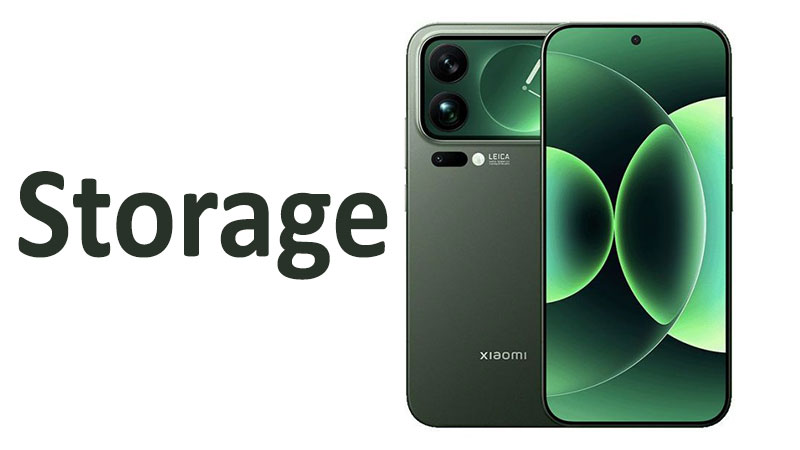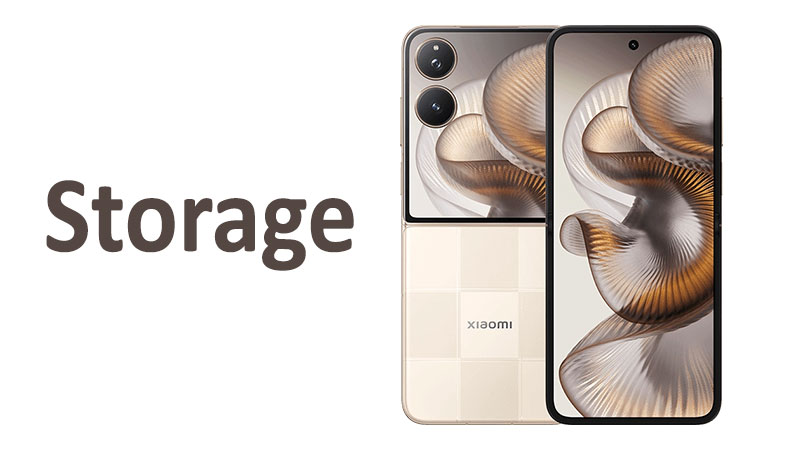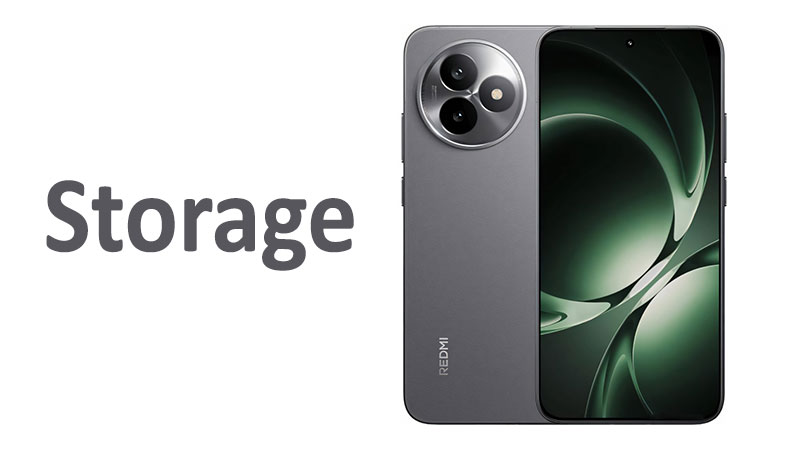The Xiaomi 17 Pro Max Storage system defines next-generation mobile performance. Choosing the right storage option is now more important than ever before. This comprehensive guide breaks down the essential storage details. We cover capacity, technology, and what every buyer should know. Understanding these features guarantees maximum value from your investment. This new flagship device promises incredible speed and space.
The Paramount Role of Smartphone Storage
Smartphone storage has evolved far beyond simple capacity. It is a critical component of overall device performance. Fast storage ensures quick app loading times. It also supports seamless 4K and 8K video recording. Modern mobile tasks demand high-speed read and write capabilities. Without sufficient and fast storage, even a powerful processor can bottleneck. Therefore, storage must be a primary consideration for flagship phone users. The Xiaomi 17 Pro Max addresses this need head-on. It offers cutting-edge capacity and speed.
Xiaomi 17 Pro Max Storage Capacity Overview
The Xiaomi 17 Pro Max provides two premium storage tiers. These options cater to different user profiles and needs. The generous minimum capacity reflects its flagship status. Buyers must choose between the two available sizes. This choice impacts the longevity and usability of the device.
Available Options: 512GB and 1TB
The base model starts at a massive 512GB of internal storage. For most users, this capacity is more than sufficient. It accommodates extensive photo libraries and numerous large apps. However, for true power users, a larger option exists. Xiaomi offers an unprecedented 1TB storage variant. This option essentially eliminates all long-term space concerns. Deciding between these two requires an honest assessment of current digital habits.
Deep Dive into UFS 4.1 Storage Technology
The true innovation in the Xiaomi 17 Pro Max is the storage type. It utilizes the industry-leading Universal Flash Storage (UFS) 4.1 standard. This technology is a significant leap forward in flash memory. It provides crucial performance improvements over older generations. UFS 4.1 is the backbone of the phone’s speed and responsiveness.
What is UFS 4.1?
UFS 4.1 is the latest evolution of flash storage for mobile devices. It is built on high-speed memory modules. The technology is designed specifically for demanding applications. It offers higher bandwidth and improved power efficiency. This advanced standard ensures data moves quickly within the phone. Fast data transfer is vital for gaming and heavy multitasking.
UFS 4.1 vs. Previous Generations (UFS 3.1 Comparison)
The difference between UFS 4.1 and older storage is dramatic. The previous common standard was UFS 3.1. UFS 4.1 effectively doubles the sequential read performance. It also significantly boosts sequential write speeds. This means apps install and open much faster. Large files transfer in a fraction of the time. The transition from UFS 3.1 to UFS 4.1 is immediately noticeable in daily use. The overall user experience becomes smoother and more fluid.
Comparison to UFS 4.0
UFS 4.1 is an iterative improvement over the UFS 4.0 standard. While UFS 4.0 already delivered huge speed increases, UFS 4.1 often refines performance. It sometimes optimizes firmware for better sustained speed. It may also offer slightly enhanced power consumption figures. This small upgrade ensures the Xiaomi 17 Pro Max uses the absolute best storage available.
Performance Metrics: Read and Write Speeds
UFS 4.1 provides theoretical sequential read speeds exceeding 4,200 MB/s. Sequential write speeds can surpass 2,800 MB/s. These figures are comparable to desktop-grade solid-state drives (SSDs). For comparison, UFS 3.1 typically peaks around 2,100 MB/s for reads. The faster speeds benefit high-resolution media. Recording 8K video requires immense write speed. UFS 4.1 handles these intensive tasks without any drops in performance.
Power Efficiency Benefits of UFS 4.1
Speed is not the only advantage of the new storage type. UFS 4.1 is also designed to be highly energy efficient. It consumes less power during data transfer operations. This efficiency helps to extend the overall battery life. A powerful phone like the Xiaomi 17 Pro Max needs optimized components. The reduced energy consumption contributes to a cooler and longer-lasting device. Better battery life is a key factor for any mobile flagship.
Capacity Breakdown: 512GB vs. 1TB
Choosing the right storage size is a pivotal decision. Both options offer a significant amount of space. However, the user’s specific needs will dictate the optimal choice. This breakdown helps potential buyers weigh the options carefully.
The 512GB Sweet Spot
The 512GB option is an excellent choice for the majority of users. It is an ideal blend of high capacity and lower cost. This storage size comfortably holds tens of thousands of photos. It also supports hundreds of high-quality applications and games. Users who stream most of their media will find 512GB plenty. It provides ample room for operating system and application updates. This tier offers significant future-proofing without the highest price tag.
Unleashing the 1TB Monster
The 1TB storage variant is designed for the most demanding users. It caters specifically to content creators and mobile gamers. Recording long sessions of 4K or 8K video consumes vast amounts of space. Professional users who edit media directly on the device need this capacity. Serious gamers with dozens of huge titles will also benefit. The 1TB capacity is the ultimate choice for absolute peace of mind. Users who never want to manage storage should choose this option.
Pros and Cons of the Capacity Tiers
512GB Pros
- Lower purchase price compared to 1TB.
- More than enough space for the average smartphone user.
- Still offers excellent future-proofing for the next few years.
512GB Cons
- May require periodic file cleanup for pro users.
- Not ideal for extensive 8K video recording.
1TB Pros
- Ultimate long-term storage solution.
- Zero need for cloud integration or external backups.
- Perfect for professional videographers and content creation.
1TB Cons
- Higher initial purchase cost.
- A significant portion of the space may remain unused for many buyers.
Specialized Storage Comparisons
Understanding the Xiaomi 17 Pro Max storage requires context. Comparing it to its predecessor is essential. We also need to see how it stacks up against top competitors.
Xiaomi 17 Pro Max vs. Previous Model Storage
The transition from the previous model represents a key upgrade. The Xiaomi 16 Pro Max likely used UFS 3.1 or UFS 4.0. The new UFS 4.1 standard provides noticeable performance boosts. This includes faster installation and boot times. Furthermore, the 512GB base storage is a move away from smaller options. Previous base models may have started at 256GB. This increased base capacity offers better default value for the consumer. The new phone’s storage is faster and more capacious.
Storage in the Flagship Competitor Landscape
The Xiaomi 17 Pro Max directly competes with other major flagship phones. Most top-tier rivals also utilize UFS 4.0 or 4.1 technology. Therefore, the primary competitive edge lies in the implementation and optimization. Xiaomi’s 1TB option differentiates it in the market. Not all competing flagships offer a consumer-available 1TB tier. The effective performance of UFS 4.1 relies on the phone’s cooling system. Effective cooling prevents thermal throttling of the storage. Xiaomi’s comprehensive approach ensures sustained high-speed performance.
The Ultimate Buyer’s Guide to Storage Selection
Selecting the correct Xiaomi 17 Pro Max storage capacity is crucial. This guide provides practical steps for assessing your personal needs. Making an informed choice saves both money and future frustration.
Assessing Your Digital Needs
Start by reviewing your current phone’s storage usage. Look at the breakdown of photos, videos, and applications. This gives a reliable baseline for future needs.
User Profile 1: The Casual User
This user mostly browses the web and uses social media. They keep a few hundred photos and stream music. Cloud services are used for most backups.
- Recommended Storage: The 512GB model is perfectly adequate. It provides ample space for years of use.
User Profile 2: The Power User/Gamer
This user downloads large, graphically intensive games. They capture occasional 4K video clips and store high-resolution photos. They prefer local files over streaming.
- Recommended Storage: 512GB is a strong candidate, but the 1TB option offers peace of mind. Choose 1TB if you want to avoid storage management entirely.
User Profile 3: The Content Creator/Pro Videographer
This user records 4K or 8K video on a daily basis. They edit large media files directly on the phone. They need local storage for professional workflow efficiency.
- Recommended Storage: The 1TB model is essential for this heavy workload. This capacity supports large project files seamlessly.
Understanding Usable Storage Capacity
It is important to remember that not all storage is available to the user. The operating system and pre-installed apps occupy space. This system partition can consume a significant amount, often 30-50GB. A 512GB model will therefore have less usable storage initially. The same applies to the 1TB variant. Always factor in the system overhead when making your decision.
Future-Proofing Your Investment
Storage is non-upgradable in a flagship smartphone. This means you must think several years ahead. High-resolution photos and videos continue to grow in file size. Mobile game downloads are increasing rapidly. Opting for a higher capacity now can extend the usable life of the phone. The cost difference might be justified over a three-to-four-year ownership cycle. Consider the longevity of your mobile storage investment.
The Role of Cloud Storage and External Drives
Cloud storage services are now extremely popular. Services like Google Drive or Dropbox offer scalable storage. They can offload older files, saving internal space. However, cloud access requires a constant internet connection. Professional users often need instantaneous access to files. External portable SSDs also provide a storage workaround. Nonetheless, they add extra equipment and complexity to the workflow. Internal capacity remains the fastest and most convenient solution.
Budget vs. Need Analysis
The storage choice often comes down to budget constraints. The 1TB model commands a higher premium price. Ask yourself if the convenience of 1TB outweighs the added cost. If your use case is marginal, save the money and choose 512GB. If your professional needs mandate zero downtime, the 1TB cost is easily justified. Prioritize speed (UFS 4.1) first, then select the capacity based on a realistic budget.
Pros and Cons of the Overall Storage Configuration
The Xiaomi 17 Pro Max storage solution is impressive. However, it is not without a few potential limitations. Evaluating these points helps complete the buyer’s picture.
Key Advantages (Pros)
The use of UFS 4.1 speed is a massive advantage. It guarantees best-in-class performance and low latency. The high sequential speeds are excellent for continuous recording. The capacity options are high by industry standards. A 512GB base model is generous for a modern flagship phone. Its power efficiency also contributes to better overall battery performance. This storage setup is truly future-proofed for the coming years.
Key Limitations (Cons)
The biggest drawback is the lack of a microSD expansion slot. This is a common trend among premium phones. The user is locked into the chosen internal storage capacity. There is no option for a low-cost upgrade later on. The 1TB variant, while powerful, represents a significant price jump. This cost may deter many average consumers. Furthermore, the storage is so fast it requires excellent thermal management.
Why UFS 4.1 is Key for Next-Gen Mobile Experiences
UFS 4.1 is more than just a marketing term. It fundamentally changes how the device operates. Applications benefit from faster read speeds. Operating system functions become quicker and more responsive. Even routine tasks feel snappier and more immediate. High-speed storage is essential for demanding features. For example, generative AI features often use local memory. The UFS 4.1 standard ensures a smooth and continuous data flow. This makes the Xiaomi 17 Pro Max feel truly instantaneous in operation.
Impact on Gaming Performance
Mobile gaming relies heavily on fast resource loading. Large textures and game maps load instantly with UFS 4.1. This reduces irritating loading screens and stutters. Gamers experience a more seamless and immersive experience. The combination of UFS 4.1 and a powerful mobile processor is formidable. It provides a distinct competitive advantage in the high-end mobile market.
Impact on Multitasking
Switching between multiple applications is seamless. The phone can quickly access data needed for background apps. This rapid access prevents apps from restarting unnecessarily. Users can juggle demanding tasks without performance degradation. This is a cornerstone of modern power user efficiency.
Conclusion: Making the Right Storage Decision
The Xiaomi 17 Pro Max storage capacity and type are top-tier. UFS 4.1 technology delivers exceptional, industry-leading speed. This speed benefits all tasks, from simple browsing to 8K video editing. Your final decision rests on one factor: longevity of use.
If you are a casual user, the 512GB option offers great value. It will serve you well for many years. If you are a professional content creator or dedicated mobile gamer, opt for the 1TB model. The higher upfront cost is an investment in professional efficiency. Regardless of the capacity you choose, you benefit from the incredible performance of UFS 4.1. Choose wisely to maximize the potential of this powerful flagship phone.
Frequently Asked Questions (FAQ)
1. Does the Xiaomi 17 Pro Max support microSD card expansion?
No, the Xiaomi 17 Pro Max does not feature a microSD card slot. You must rely on the internal storage you select at purchase.
2. What is the actual difference between UFS 4.1 and UFS 3.1?
UFS 4.1 offers nearly double the sequential read and write speeds compared to UFS 3.1. This results in faster app loading and file transfer.
3. Is 512GB enough storage for an average user today?
Yes, 512GB is more than enough for most average users. This amount can easily store years of photos and a large collection of apps.
4. How much of the storage is taken up by the operating system?
The operating system and pre-installed files typically consume 30GB to 50GB of the total advertised storage capacity.
5. Why is the storage type (UFS 4.1) more important than just the capacity?
The storage type determines the speed. Faster storage means quicker app launches, reduced loading times, and smooth high-resolution video recording performance.



